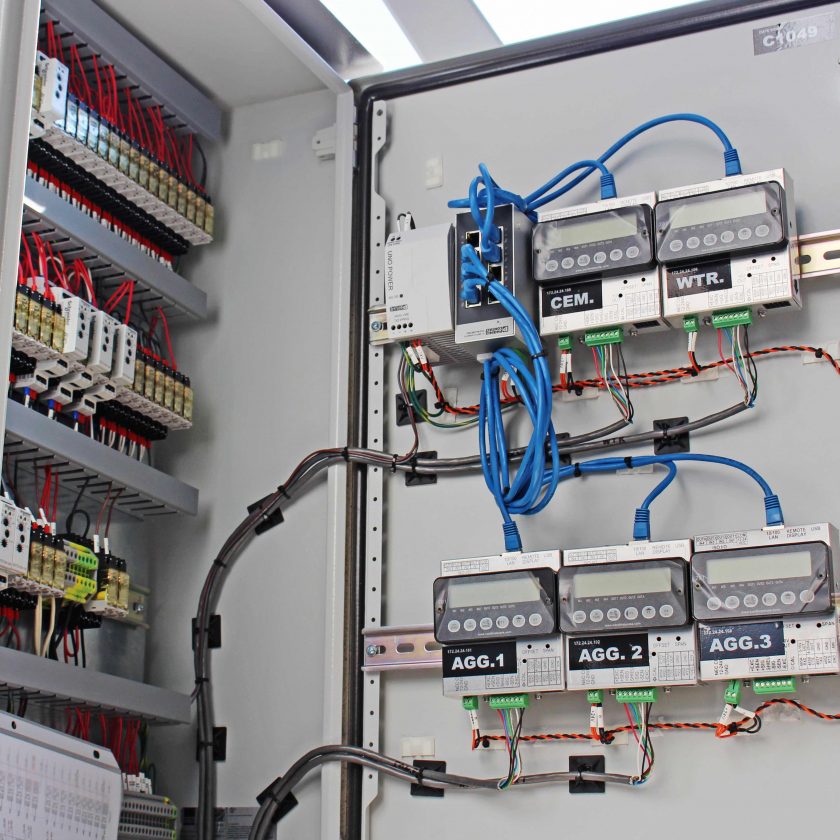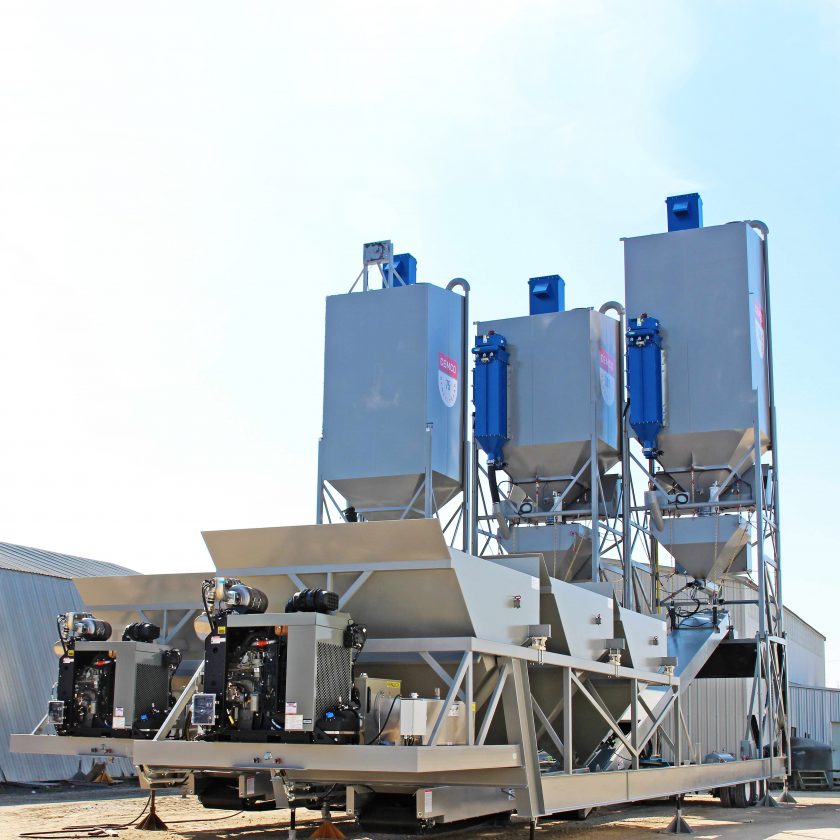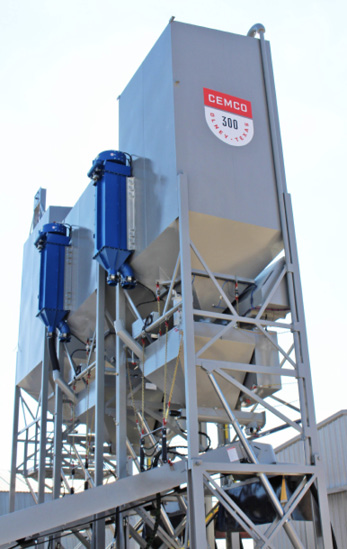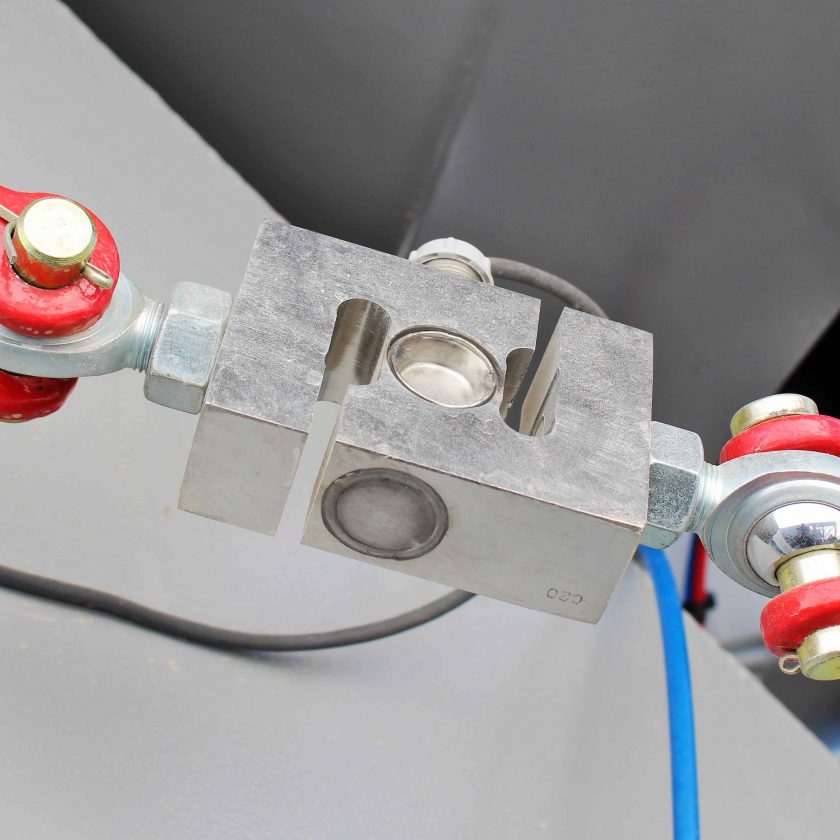Cemco Inc. has built a presence in North America and overseas concrete markets through 46 years of mobile batch plant engineering and fabrication, augmented by precision weighing components yielding mix accuracy and quality. Underscoring the manufacturer’s capabilities are equipment deliveries to customers approved for U.S. Army Corps of Engineers, Federal Aviation Administration and Nuclear Regulatory Commission projects, as well as contracts for big box retailer and other major private construction concerns.
Texas-based Cemco uses Cardinal Scale weighing system components to provide the kind of product consistency and reliability needed to save contractor, engineer or inspector resources and time. In addition to a wide range of industrial scales, Cardinal Scale manufactures concrete batch plant-grade strain gauges and load cells at its Webb City, Mo. factory. THBC kits with stainless steel, waterproof load cells are used for weighing aggregate in ground-level Cemco plant hoppers, while ZX suspension type load cells weigh water and cement from overhead vessels.



three- or four-cell systems and have capacities ranging from 2,500 lbs. to 20,000 lbs. per load cell.
Additionally, the Cardinal Scale 201 digital indicator is used in conjunction with Jonel Archer panels that are contained within Cemco portable batch controllers. Most applications entail four to six indicators used when feeding materials into a concrete mixer truck. The 201 aids in parsing sand & gravel or rock for batching concrete by the accurate and fast de-cumulative method. Innovative batch plant models, load cells and control panel indicators combine to offer a precision process that adds the exact amount of material needed to make concrete as specified while reducing waste.
“Load cells are an integral part of a concrete batch plant,” says Cemco Plant Manager Jared Carter. “Batch plants need to accurately weigh and discharge materials. Year after year, Cardinal Scale builds and delivers high-quality load cells that help our equipment achieve high standards that customers expect. From supply chain issues to customer service, Cardinal continues to work hard to meet our demands as an OEM. Having a partnership with vendors like Cardinal Scale is paramount to our success.”
“We are heading into our sixth year with Cemco. They have been a great partner and have genuine loyalty,” affirms Cardinal Scale OEM Sales Manager Samuel Wimsett. “We have an open line of communication which allows for process improvement and the opportunity for continuous growth.”

DEPLOYMENT EASE
Cemco mobile batch plants are complete units that can be towed, set up, and ready within a few hours. Only a few workers are needed to level a model’s footing and erect the cement silo. The plants are also self-contained, shipped with a diesel engine, high and low level indicators, dust collectors, air compressors, water pumps, and control systems. Their design eliminates the costs and time needed for using cranes during set-up.
Cemco engineering eliminates the need for outside plant power sources, which also saves time and effort. Diesel engines power the hydraulic systems that are applied for concrete batching. The plants’ self-erecting feature also gravity feeds materials when weighing, which prevents issues associated with auguring systems. Additional silos, feeder belts, and even concrete mixers can be utilized for speeding up and dispersing materials in a more efficient manner.
“Although most of our applications are fairly straightforward and normal, our design has allowed us to see some very interesting places,” observes Cemco Design Engineer DJ Meschkat. “One of the most memorable projects was based in Aberdeen, Scotland about six or seven years ago. We worked on a massive road project, which at the time, was the largest in the European Union.”
“We once took a project in Ghana that was eye-opening,” he adds. “The way of life was very different from what we experience. The scale of this quarry project was massive, backed by American and Chinese investment that had bought probably close to $100 million in heavy equipment. What was most strange about this particular job was watching locals cutting rebar with hacksaws. The reason for this was the locals demanded some kind of work for themselves during the project, or they would storm the camp. So, for a meager salary of a few dollars a day, local workers were allowed to cut rebar with hacksaws.” “The only place that I ever felt unsafe was on a road and infrastructure job in Caracas, Venezuela,” Meschkat continues. “The government requested we paint our batch plants Ferrari red, which is quite a bit different from our normal paint scheme. Crews were doing road work in the middle of the day—pretty unusual in a place with such high temperatures and humidity. We found out the Venezuelan government does this to show citizens that they are working. The corruption there is so widespread that measures like this are put into place to show people they aren’t being stolen from.” — Cardinal Scale, Webb City, Mo., 800/441-4237, www.cardinalscale.com; Cemco Inc., Olney, Texas, 855/564-5855, www.cemcoinc.com

